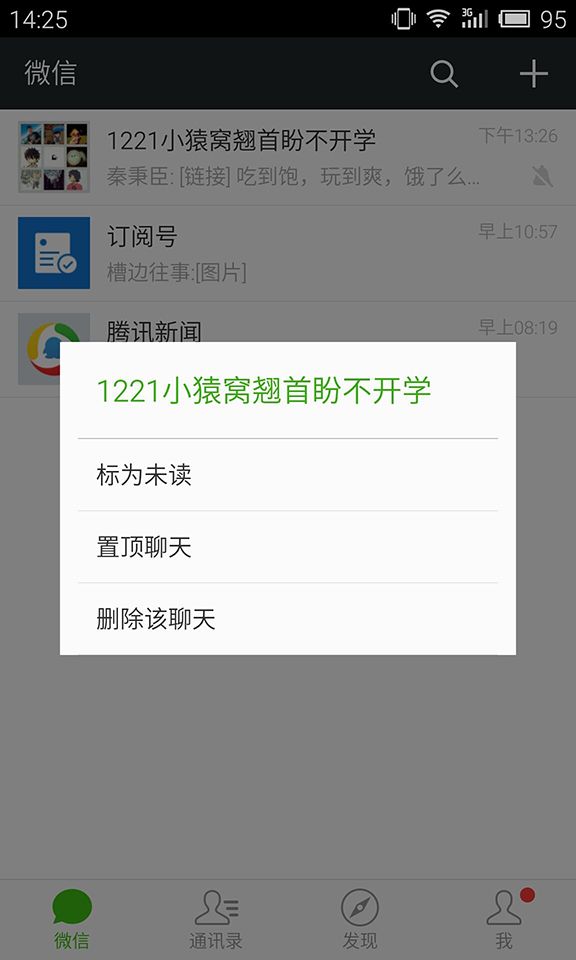Android常用实例—Alert Dialog的使用
Android常用实例—Alert Dialog的使用
AlertDialog的使用很普遍,在应用中当你想要用户做出“是”或“否”或者其它各式各样的选择时,为了保持在同样的Activity和不改变用户屏幕,就可以使用AlertDialog.
代码地址
https://github.com/JueYingCoder/AndroidUsefulExample_AlertDialog
这篇文章主要讲解如何实现各种AlertDialog,文章比较长,如果能认真读完,AlertDialog的各种用法应该就能掌握了,下面是我们今天要实现的最终效果:
乍一看,在应用中我们见过很多千奇百怪的对话框,但仔细分析,它还是有规律可循的,不外乎那几种,我们要学会从简易处着手,抽丝剥茧来掌握一项看起来似乎很复杂的功能。只要我们理清了基本逻辑,其他的根据需要适当改造就可以为我们所用了!
AlertDialog基本的结构如下:

可以将对话框主要分为三个部分:上面区域是标题栏和图标,中间区域是内容区,下方是button区;其他形式各异的对话框也都是基于此的变体而已!
那么要创建一个对话框,我们需要做些什么:
1,首先需要创建一个AlertDialog.Builder对象,基本语法:
AlertDialog.Builder alertDialogBuilder=new AlertDialog.Builder(this);2,创建alertDialogBuilder对象后,通过调用它的create()方法就可以构造出一个对话框
AlertDialog alertDialog = alertDialogBuilder.create();
alertDialog.show();//将dialog显示出来3,但是我们还有一个疑问,如何设置Dialog的其他属性呢,也就是说怎么控制标题,图表区域,内容区域和button区域,我们自然而然的想到的是一系列set方法;事实上真是如此,通过调用alertDialogBuilder对象的setXX方法来实现:
alertDialogBuilder.setTitle();//设置标题
alertDialogBuilder.setIcon();//设置图表
/*设置下方按钮*/
alertDialogBuilder.setPositiveButton();
alertDialogBuilder.setNegativeButton();
alertDialogBuilder.setNeutralButton();
/*对话框内容区域的设置提供了多种方法*/
setMessage();//设置显示文本
setItems();//设置对话框内容为简单列表项
setSingleChoiceItems();//设置对话框内容为单选列表项
setMultiChoiceItems();//设置对话框内容为多选列表项
setAdapter();//设置对话框内容为自定义列表项
setView();//设置对话框内容为自定义View
//设置对话框是否可取消
setCancelable(booleab cancelable);
setCancelListener(onCancelListener);综上:对于AlertDialog的使用其实主要还是针对如何设置内容区域;
下面我们通过使用不同的内容区域的设置方法,实现几个常用的对话框;
基本思路是在MainActivity中添加几个Button,点击后分别弹出对应的AlertDialog
步骤:
- 1 .创建Android Project->”AlertDialogDemo”
- 2 .编写activity_main.xml布局文件
- 3.编写所需strings.xml
- 4.编写MainActivity中各方法
限于篇幅的问题,现只贴出关键性部分代码,其余的请读者自行实现;
activity_main.xml
<LinearLayout xmlns:android="http://schemas.android.com/apk/res/android"
xmlns:tools="http://schemas.android.com/tools"
android:orientation="vertical"
android:layout_width="match_parent"
android:layout_height="match_parent" >
<Button
android:id="@+id/btn_simple_dialog"
android:text="@string/simple_dialog"
android:textColor="#ffffff"
android:textSize="18sp"
android:background="#449F1D"
android:layout_marginTop="10dp"
android:layout_marginLeft="50dp"
android:layout_marginRight="50dp"
android:layout_width="match_parent"
android:layout_height="wrap_content" />
<Button
android:id="@+id/btn_simple_list_dialog"
android:text="@string/simple_list_dialog"
android:textColor="#ffffff"
android:textSize="18sp"
android:background="#449F1D"
android:layout_marginTop="10dp"
android:layout_marginLeft="50dp"
android:layout_marginRight="50dp"
android:layout_width="match_parent"
android:layout_height="wrap_content" />
<Button
android:id="@+id/btn_single_choice_dialog"
android:text="@string/single_choice_dialog"
android:textColor="#ffffff"
android:textSize="18sp"
android:background="#449F1D"
android:layout_marginTop="10dp"
android:layout_marginLeft="50dp"
android:layout_marginRight="50dp"
android:layout_width="match_parent"
android:layout_height="wrap_content" />
<Button
android:id="@+id/btn_multi_choice_dialog"
android:text="@string/multi_choice_dialog"
android:textColor="#ffffff"
android:textSize="18sp"
android:background="#449F1D"
android:layout_marginTop="10dp"
android:layout_marginLeft="50dp"
android:layout_marginRight="50dp"
android:layout_width="match_parent"
android:layout_height="wrap_content" />
<Button
android:id="@+id/btn_custom_adapter_dialog"
android:text="@string/custom_adapter_dialog"
android:textColor="#ffffff"
android:textSize="18sp"
android:background="#449F1D"
android:layout_marginTop="10dp"
android:layout_marginLeft="50dp"
android:layout_marginRight="50dp"
android:layout_width="match_parent"
android:layout_height="wrap_content" />
<Button
android:id="@+id/btn_custom_view_dialog"
android:text="@string/custom_view_dialog"
android:textColor="#ffffff"
android:textSize="18sp"
android:background="#449F1D"
android:layout_marginTop="10dp"
android:layout_marginLeft="50dp"
android:layout_marginRight="50dp"
android:layout_width="match_parent"
android:layout_height="wrap_content" />
</LinearLayout>布局效果:
strings.xml
<resources>
<string name="app_name">ALertDialogDemo</string>
<!-- 主界面布局所需要的字符串资源-->
<string name="action_settings">Settings</string>
<string name="simple_dialog">基本对话框</string>
<string name="simple_list_dialog">简单列表对话框</string>
<string name="single_choice_dialog">单选项列表对话框</string>
<string name="multi_choice_dialog">多选项列表对话框</string>
<string name="custom_adapter_dialog">自定义Adapter对话框</string>
<string name="custom_view_dialog">自定义View对话框</string>
<!-- 对话框所需要的字符串资源-->
<string name="dialog_message">这里是内容区域</string>
<string name="postive_button">确定</string>
<string name="negative_button">取消</string>
<!-- 对话框提示信息字符串资源-->
<string name="toast_postive">你点击了确定按钮</string>
<string name="toast_negative">你点击了取消按钮</string>
<string name="text">自定义Adapter的内容</string>
</resources>MainActivity.java
public class MainActivity extends ActionBarActivity implements View.OnClickListener{
//对应各个button
private Button simpleDiaog;
private Button simpleListDiaog;
private Button singleChoiceDiaog;
private Button multiChoiceDiaog;
private Button customAdateprDiaog;
private Button customViewDiaog;
//声明一个AlertDialog构造器
private AlertDialog.Builder builder;
@Override
protected void onCreate(Bundle savedInstanceState) {
super.onCreate(savedInstanceState);
setContentView(R.layout.activity_main);
//实例化控件
simpleDiaog= (Button) findViewById(R.id.btn_simple_dialog);
simpleListDiaog= (Button) findViewById(R.id.btn_simple_list_dialog);
singleChoiceDiaog= (Button) findViewById(R.id.btn_single_choice_dialog);
multiChoiceDiaog= (Button) findViewById(R.id.btn_multi_choice_dialog);
customAdateprDiaog= (Button) findViewById(R.id.btn_custom_adapter_dialog);
customViewDiaog= (Button) findViewById(R.id.btn_custom_view_dialog);
//监听点击事件
simpleDiaog.setOnClickListener(this);
simpleListDiaog.setOnClickListener(this);
singleChoiceDiaog.setOnClickListener(this);
multiChoiceDiaog.setOnClickListener(this);
customAdateprDiaog.setOnClickListener(this);
customViewDiaog.setOnClickListener(this);
}
/** * * 每个button点击后弹出对应对话框,为了方便,各写一个showXXDialog()方法 */
@Override
public void onClick(View view) {
switch (view.getId()){
case R.id.btn_simple_dialog:
showSimpleDialog(view);
break;
case R.id.btn_simple_list_dialog:
showSimpleListDialog(view);
break;
case R.id.btn_single_choice_dialog:
showSingleChoiceDialog(view);
break;
case R.id.btn_multi_choice_dialog:
showMultiChoiceDialog(view);
break;
case R.id.btn_custom_adapter_dialog:
showCustomAdapterDialog(view);
break;
case R.id.btn_custom_view_dialog:
showCustomViewDialog(view);
break;
}
}
@Override
public boolean onCreateOptionsMenu(Menu menu) {
getMenuInflater().inflate(R.menu.menu_main, menu);
return true;
}
}上述代码都比较简单,现在我们真正关心的就是如何去具体实现showXXDialog;
1.showSimpleDialog(): 根据我们前面所写的基本语法,我们可以很快写出下面这些代码,唯一需要注意的就是监听两个button,由于这是最基本也是最核心的AlertDialog,所以只要掌握了这个其他的alertDialog也就相对简单了;
//显示基本Dialog
private void showSimpleDialog(View view) {
builder=new AlertDialog.Builder(this);
builder.setIcon(R.mipmap.ic_launcher);
builder.setTitle(R.string.simple_dialog);
builder.setMessage(R.string.dialog_message);
//监听下方button点击事件
builder.setPositiveButton(R.string.postive_button, new DialogInterface.OnClickListener() {
@Override
public void onClick(DialogInterface dialogInterface, int i) {
Toast.makeText(getApplicationContext(),R.string.toast_postive,Toast.LENGTH_SHORT).show();
}
});
builder.setNegativeButton(R.string.negative_button, new DialogInterface.OnClickListener() {
@Override
public void onClick(DialogInterface dialogInterface, int i) {
Toast.makeText(getApplicationContext(), R.string.toast_negative, Toast.LENGTH_SHORT).show();
}
});
//设置对话框是可取消的
builder.setCancelable(true);
AlertDialog dialog=builder.create();
dialog.show();
}实现效果:
2,showSimpleListDialog():前面的代码很相似,唯一需要改变的就是将内容区域改为列表项:
private void showSimpleListDialog(View view) {
builder=new AlertDialog.Builder(this);
builder.setIcon(R.mipmap.ic_launcher);
builder.setTitle(R.string.simple_list_dialog);
/** * 设置内容区域为简单列表项 */
final String[] Items={"Items_one","Items_two","Items_three"};
builder.setItems(Items, new DialogInterface.OnClickListener() {
@Override
public void onClick(DialogInterface dialogInterface, int i) {
Toast.makeText(getApplicationContext(), "You clicked "+Items[i], Toast.LENGTH_SHORT).show();
}
});
builder.setCancelable(true);
AlertDialog dialog=builder.create();
dialog.show();
}
实现效果:
3,showSingleChoiceDialog():注意setSingleChoiceItems()内部各参数的意义
private void showSingleChoiceDialog(View view) {
builder=new AlertDialog.Builder(this);
builder.setIcon(R.mipmap.ic_launcher);
builder.setTitle(R.string.single_choice_dialog);
/** * 设置内容区域为单选列表项 */
final String[] items={"Items_one","Items_two","Items_three"};
builder.setSingleChoiceItems(items, 1, new DialogInterface.OnClickListener() {
@Override
public void onClick(DialogInterface dialogInterface, int i) {
Toast.makeText(getApplicationContext(), "You clicked "+items[i], Toast.LENGTH_SHORT).show();
}
});
builder.setCancelable(true);
AlertDialog dialog=builder.create();
dialog.show();
}实现效果:
4,showMultiCHoiceDialog():
private void showMultiChoiceDialog(View view) {
builder=new AlertDialog.Builder(this);
builder.setIcon(R.mipmap.ic_launcher);
builder.setTitle(R.string.simple_list_dialog);
/** * 设置内容区域为多选列表项 */
final String[] items={"Items_one","Items_two","Items_three"};
builder.setMultiChoiceItems(items, new boolean[]{true, false, true}, new DialogInterface.OnMultiChoiceClickListener() {
@Override
public void onClick(DialogInterface dialogInterface, int i, boolean b) {
Toast.makeText(getApplicationContext(),"You clicked "+items[i]+" "+b,Toast.LENGTH_SHORT).show();
}
});
builder.setCancelable(true);
AlertDialog dialog=builder.create();
dialog.show();
}实现效果:
5,showCustomAdapterDialog():
这部分涉及到自定义Adapter,如果对这部分不太了解,也不用灰心,在后面的文章中我会单独讲解Adapter这部分。在这里我们只需要了解自定义Adapter需要继承自BaseAdapter,然后需要覆写其中四个方法,其中getView()方法负责显示,所以我们还需要为它创建一个布局文件:
layout->custom_adapter.xml
<?xml version="1.0" encoding="utf-8"?>
<LinearLayout xmlns:android="http://schemas.android.com/apk/res/android" android:orientation="horizontal" android:background="#dddddd" android:layout_marginLeft="15dp" android:layout_marginTop="15dp" android:layout_marginBottom="10dp" android:layout_marginRight="15dp" android:layout_width="match_parent" android:layout_height="wrap_content">
<ImageView android:id="@+id/id_image" android:layout_width="60dp" android:layout_height="60dp" />
<TextView android:textColor="#554995" android:id="@+id/id_text" android:layout_marginLeft="20dp" android:layout_gravity="center" android:layout_width="wrap_content" android:layout_height="wrap_content" />
</LinearLayout>布局效果:
然后我们在需要在MainActivity.java中实现我们自定义的Adapter类:
private class CustomAdapter extends BaseAdapter {
private List<ItemBean> items;
private LayoutInflater inflater;
private ImageView image;
private TextView text;
public CustomAdapter(List<ItemBean> items, Context context) {
this.items = items;
this.inflater = LayoutInflater.from(context);
}
@Override
public int getCount() {
return items.size();
}
@Override
public Object getItem(int i) {
return items.get(i);
}
@Override
public long getItemId(int i) {
return i;
}
@Override
public View getView(int i, View view, ViewGroup viewGroup) {
if(view==null){
view=inflater.inflate(R.layout.custom_adapter,null);
image= (ImageView) view.findViewById(R.id.id_image);
text= (TextView) view.findViewById(R.id.id_text);
}
image.setImageResource(items.get(i).getImageId());
text.setText(items.get(i).getMessage());
return view;
}
}我们在这里使用了List items;是因为Adapter中需要一张图片和String来填充我们刚定义好的layout;所以我们还需要在MainActivity中建立一个数据类:ItemBean:
private class ItemBean{
private int imageId;
private String message;
public ItemBean(int imageId, String message) {
this.imageId = imageId;
this.message = message;
}
public String getMessage() {
return message;
}
public int getImageId() {
return imageId;
}
public void setImageId(int imageId) {
this.imageId = imageId;
}
public void setMessage(String message) {
this.message = message;
}
}
private void showCustomAdapterDialog(View view){
builder=new AlertDialog.Builder(this);
builder.setIcon(R.mipmap.ic_launcher);
builder.setTitle(R.string.custom_adapter_dialog);
/** * 设置内容区域为自定义adapter */
List<ItemBean> items=new ArrayList<>();
items.add(new ItemBean(R.mipmap.icon,"You can call me xiaoming"));
items.add(new ItemBean(R.mipmap.ic_launcher, "I'm android xiao"));
CustomAdapter adapter=new CustomAdapter(items,getApplicationContext());
builder.setAdapter(adapter, new DialogInterface.OnClickListener() {
@Override
public void onClick(DialogInterface dialogInterface, int i) {
Toast.makeText(getApplicationContext(),"You clicked"+i,Toast.LENGTH_SHORT).show();
}
});
builder.setCancelable(true);
AlertDialog dialog=builder.create();
dialog.show();
}实现效果:
6,showCustomViewDialog()
为了实现自定义View的内容区域,我们首先需要建立一个布局文件:
layout->custom_view.xml
<?xml version="1.0" encoding="utf-8"?>
<LinearLayout xmlns:android="http://schemas.android.com/apk/res/android" android:layout_width="match_parent" android:layout_height="match_parent" android:orientation="vertical" android:gravity="center" android:background="#25AE90">
<LinearLayout android:orientation="horizontal" android:layout_width="match_parent" android:layout_height="wrap_content" android:layout_marginRight="60dp" android:layout_marginLeft="60dp">
<TextView android:text="用户名" android:layout_marginRight="10dp" android:textSize="20sp" android:textColor="#ffffff" android:layout_width="wrap_content" android:layout_height="wrap_content" />
<EditText android:layout_width="0dp" android:layout_weight="1" android:layout_height="40dp" android:background="#ffffff"/>
</LinearLayout>
<LinearLayout android:orientation="horizontal" android:layout_width="match_parent" android:layout_height="wrap_content" android:layout_marginTop="10dp" android:layout_marginRight="60dp" android:layout_marginLeft="60dp">
<TextView android:text="密 码" android:layout_marginRight="10dp" android:textSize="20sp" android:textColor="#ffffff" android:layout_width="wrap_content" android:layout_height="wrap_content" />
<EditText android:layout_width="0dp" android:layout_weight="1" android:layout_height="40dp" android:background="#ffffff"/>
</LinearLayout>
<LinearLayout android:orientation="horizontal" android:layout_width="match_parent" android:layout_height="wrap_content" android:layout_marginTop="10dp" android:layout_marginRight="60dp" android:layout_marginLeft="60dp">
<Button android:text="登 录" android:textColor="#25AE90" android:background="#ECEEF1" android:layout_width="0dp" android:layout_marginRight="10dp" android:layout_weight="1" android:layout_height="wrap_content" />
<Button android:text="取 消" android:textColor="#25AE90" android:background="#ECEEF1" android:layout_width="0dp" android:layout_weight="1" android:layout_height="wrap_content" />
</LinearLayout>
</LinearLayout>布局效果:
实现showCustomViewDialog()
private void showCustomViewDialog(View view){
builder=new AlertDialog.Builder(this);
builder.setIcon(R.mipmap.ic_launcher);
builder.setTitle(R.string.custom_view_dialog);
/** * 设置内容区域为自定义View */
LinearLayout loginDialog= (LinearLayout) getLayoutInflater().inflate(R.layout.custom_view,null);
builder.setView(loginDialog);
builder.setCancelable(true);
AlertDialog dialog=builder.create();
dialog.show();
}实现效果:
总结:
- AlertDialog基本用法 :需要掌握AlertDialog的创建过程,理解Builder模式;
- 内容区域 :AlertDialog的难点就在于设计合适的内容区域;
- 自定义布局 :很多时候我们都需要按照自己的意愿去定制AlertDialog内容区域的显示形式,这就需要我们掌握自定义Adapter和自定义View的用法,而这两部分也是一个难点,要讲的话又是另一个专题了;
作为文章的结束;为了检验我们是否已经掌握了AlertDialog的各种用法,我们可以试着实现以下微信中的AlertDialog;如果你已经掌握了自定义adapter和自定义ListView的话可以试着实现删除和置顶ListItem的功能。
Tips:编写自定义ListView,监听长按ListItem时弹出AlertDialog,并且实现点击删除能保证ListView中的Item删除掉,并且能够实现置顶功能
- 微博:@JueYingCoder,
- 个人主页:Coder:程序员&&工科男的日常,





